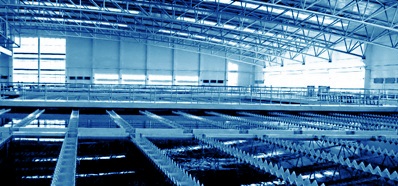Telemetry
Comprehensive Pipeline Diagnostics
Currently, pipeline diagnostics and well inspections allow for the quick identification of problematic areas without the need for trenching.
Today’s methods replace labor-intensive processes with prompt teleinspection, ensuring swift examination of pipeline systems for precise issue identification and location.
Over time, pipelines experience decreased throughput due to various reasons, regardless of their material. In cases of abrupt deterioration, professional rehabilitation is urgently required.
The choice of rehabilitation methods is determined following meticulous pipeline flushing and diagnostics. Flushing can be hydrodynamic or mechanical, with special attention to debris removal. Teleinspection aids in identifying damages on the inner surface.
Pipeline Diagnostic Methods
To ensure effective operation and prevent potential accidents, it is necessary to regularly conduct pipeline diagnostics. With the advancement of technologies, more precise and efficient diagnostic methods are emerging, including:
- Visual inspection: This is one of the simplest yet most important diagnostic methods. It allows for the identification of obvious signs of wear, corrosion, cracks, leaks, or deformations. Inspection can be carried out visually or with the help of specialized optical equipment, such as endoscopes or cameras with ultrasonic or infrared capabilities.
- Ultrasonic flaw detection: This method enables the detection of internal defects, such as cracks, pores, or corrosion zones, without damaging the material itself. This method is particularly useful for checking welded joints and determining the thickness of pipe walls.
- Magnetic particle inspection: Used to detect surface cracks and defects in metallic materials, this method is based on the phenomenon of material magnetization and the application of powder, which reveals areas with structural irregularities.
- Electromagnetic methods: Such as induction and electromagnetic flaw detection, are used to detect defects in metal pipes by measuring changes in the electromagnetic properties of the material.
- Infrared thermography: Allows for the detection of leaks and other issues in pipelines by measuring differences in surface temperature. This method is particularly effective for detecting coolant leaks.
- Hydrostatic and hydraulic testing: Conducted by filling the pipeline with water or another working fluid under pressure and monitoring its level. This method allows for the detection of leaks and verification of pipeline strength.
Each of the listed methods has its advantages and disadvantages, and the combined use of several methods often provides a more complete picture of the condition of the pipeline system. Regular pipeline diagnostics help prevent accidents, improve system efficiency, and extend its service life.
Post-Diagnostic Measures
After diagnostics, various measures may be taken:
- Application of different coatings;
- Installation of soft polymer sleeves;
- Replacement of pipes with smaller diameters;
- Patch repairs;
- Utilization of spiral polymers made from modern materials.
Rehabilitation aims not only to restore throughput but also to enhance pipeline quality. Salt deposits on internal surfaces can lead to various issues.
Pipeline telemetry is employed for:
- Prolonging service life;
- Corrosion prevention;
- Hindering mineralization and vegetation growth;
- Increasing throughput;
- Energy conservation;
- Maintaining water quality during transportation.
Advantages of the equipment supplied by “LET” company
The equipment provided by our company allows for investigations at depths of up to 10 meters with pipeline diameters ranging from 50 to 1200 mm.
The advantages of the pipeline television diagnostics method include:
- Swift identification of clogging causes
- Detection of damage type and characteristics
- Precise damage location determination for necessary repair works
- Marking of pipe replacement areas without trench excavation needs
Based on the teleinspection data counter readings, after all necessary measurements and distance traveled considerations, the communication system’s location is determined, significantly simplifying the estimation task.
The company offers equipment supply capabilities for comprehensive pipeline diagnostics of any complexity.
You can choose the equipment of your interest on the company’s website in the catalog.
SDPCCTVC – Sewerage pipeline inspection complex
| Title | Indicator |
| SDPCCTVC | 10’’ LCD, 110mm, IP68, 12x zoom, 150mm wheel size |

BSDPCCTVC – Sewer pipe inspection complex for heavy-duty conditions
| Title | Indicator |
| BSDPCCTVC | 10’’ LCD, 110mm, IP68, 12x zoom, 150mm wheel size |




